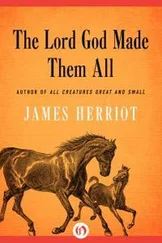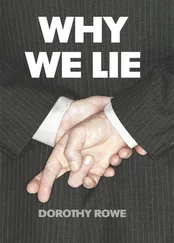Some time before dawn Cullinane heard a rapping on his door and went on deck while the stars were still bright, but as the moon fell away toward areas he had left, the sun began to rise over the land he was seeking, and the crown of stars that hung over Israel glimmered fitfully and faded. The shoreline became visible, mauve hills in the gray dawn, and he saw three things he knew: to the left the white Muslim mosque of Akko, in the center the golden dome of the Bahai temple, and to the right, high on a hill, the brown battlements of the Catholic Carmelites.
“Just like the Jews,” he said. “Denied religious liberty by all, they extend it to everyone.” He thought that might be a good motto for the new state, but as the freighter approached land he added, “I’d feel more like a traveler to Israel if they’d let me see one good synagogue.” But the Jewish religion was an internal thing, a system for organizing life rather than building edifices, and no Jewish religious structures were visible.
Even at the dockside his introduction to the Jewish state was postponed, for the first man who recognized him was a genial, good-looking Arab in his late thirties, dressed nattily in western clothes, who called from the shore in English, “Welcome! Welcome! Everything’s ready.” Two generations of British and American archaeologists had been greeted with this heartening call, either by the present Jemail Tabari or by his famous uncle, Mahmoud, who had worked on most of the historic digs in the area. Dr. Cullinane, from the Biblical Museum in Chicago, was reassured.
For many years he had dreamed of excavating one of the silent mounds in the Holy Land, perhaps even to uncover additional clues to the history of man and his gods as they interacted in this ancient land; and as he waited for the freighter to tie up he looked across the bay to Akko, that jewel of a seaport, where so much of the history he was about to probe had started. Phoenicians, Greeks, Romans, Arabs, and finally Richard the Lion Heart and his Crusaders had all come to that harbor in glorious panoply, and to follow in their footsteps was for an archaeologist like Cullinane a privilege. “I hope I do a good job,” he whispered.
As soon as he cleared the papers for the ponderous amount of equipment stored in the freighter—the books, the chemicals, the photographic equipment, the little Diesel locomotive, the thousand things a layman would not think of—he ran down the gangplank and embraced Tabari, and the Arab reported, “Things couldn’t be going better. Dr. Bar-El will be here shortly. The other Americans are already dug in, and the photographer is flying down from London this afternoon.”
“Weather been good?” Cullinane asked. He was a lean, tall man just entering his forties, an Irish Catholic educated at Harvard and Grenoble, with excavation experience in Arizona, Egypt and the area south of Jerusalem. Under normal circumstances it would have been unlikely for a Catholic to head such a dig, for the earlier field directors of the Biblical Museum had usually been Protestant clergymen, but the bulk of the money for this particular dig had come from a Chicago Jew who had said, “Isn’t it about time we had a professional doing the work?” and Cullinane had been agreed upon, particularly since he spoke Hebrew, a little Arabic and French. He was the crop-headed type of new scholar, solidly trained and not given to nonsense. On his departure from Chicago, loaded with gear, he had been asked by a newspaperman if he expected to dig up any records which would prove that the Bible was true. Cullinane replied, “No, we’re not out to help God steady the ark.” The impudent reply had been widely quoted, but when the businessman who had put up the quarter of a million dollars for the dig saw the wisecrack he felt reassured that his money was in sober hands.
“Weather’s flawless,” the Arab replied, speaking with the fluent ease of a man whose father had been Sir Tewfik Tabari O.B.E., K.B.E., one of the Arab leaders whom the British had trusted. Sir Tewfik had sent his son to Oxford, hoping that he would want to follow him in the civil service, but the boy had from the first been enchanted by his Uncle Mahmoud’s work in digging up history, and his professors at Oxford had turned him into a first-rate scientific archaeologist. In the winter of 1948, when the Jews threatened to capture Palestine from the Arabs, young Jemail, then twenty-two, had debated a long time as to what he should do. He ended by making a typical Tabari choice: he stayed in Akko and fought the Jews vigorously. Then, when his haphazard army was crushed, he announced that he would not seek asylum in Egypt or Syria. He would stay in Israel, where he had always lived, and would work with the Jews to rebuild the war-torn land. As a result of this bold decision he found himself popular and almost the only trained Arab available for the many archaeological excavations that were proliferating throughout the country. His presence at any site meant that the highest scientific standards would be enforced and that good spirits would be preserved among the workmen, who said of him, “Jemail once dug twenty feet straight down using only a camel’s-hair brush.”
As the two friends talked a jeep squealed its brakes outside the customs area, and the driver, a petite young woman in her mid-thirties, jumped out and ran past the protesting guard to give Cullinane a leaping kiss, “Shalom, John! It’s so wonderful to have you back.” She was Dr. Vered Bar-El, Israel’s top expert in dating pottery sherds, and without her assistance Dr. Cullinane’s dig could not succeed; for she had the unusual capacity to memorize the scores of scientific reports issued during the twentieth century, so that whenever someone like Cullinane or Tabari handed her a fragment of pottery, a sherd left by some household accident that had occurred seven thousand years ago, she could usually look at the piece, then summon from her extraordinary memory pieces of similar construction found in Egypt or Jericho or Beit Mirsim. Archaeologists of five countries called her “our walking calendar,” and the commendable thing about her work was that when she did not know she said so. She was a small woman, beautiful, bright-eyed, a pleasure to have at any dig. She was also one of the first major experts who had been trained wholly in Israel: when the state came into being in 1948 she was but seventeen, and had later attended Hebrew University in Jerusalem.
“Leave the gear where it is,” she said with a musical Hebrew accent. “I’ve brought along two of the crew, and they’ll stand guard till it’s unloaded. Right now let’s head for the dig. I’m hungry to get started.” She led Cullinane to the jeep and with deft turns of the wheel soon had him on the ancient road that led from Akko to Zefat, and beyond that to Damascus, the capital of Syria.
As they entered this classic road—for some five thousand years a major east-west artery through which had flowed the contributions of Asia on their way to Venice and Genoa—Cullinane took pains to orient himself. “Could you stop the jeep for a moment?” he asked Mrs. Bar-El. “I’m sorry, but if I get mixed up at the start I never get straightened out later.” He got out of the jeep, studied his field map, turned firmly toward the direction from which they had come, and said, “Straight ahead to the west is Akko and the Mediterranean. To my right, the Crusader castle of Starkenberg. To my left, Jerusalem. Behind me, to the east, the Sea of Galilee. And if you continue in the direction the car’s headed you reach Zefat and, far beyond it, Damascus. Right?”
“Roger over,” Tabari said, but he thought it strange that in the Holy Land a man should orient himself by facing away from Jerusalem.
For some miles the riders discussed the coming dig and the allocations of work that had been agreed upon. “The photographer coming down from London is excellent,” Cullinane assured his colleagues. “Chap who did such good work at Jericho. And our architect is top-notch. University of Pennsylvania. I haven’t seen any drawings done by the girl you’ve chosen for draftsman. Is she capable?”
Читать дальше

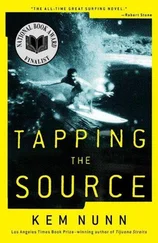


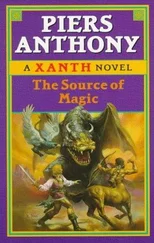
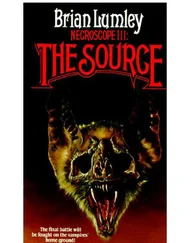
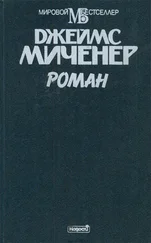

![Джеймс Купер - Пионеры, или У истоков Саскуиханны [The Pioneers, or The sources of the Susquehannah]](/books/395797/dzhejms-kuper-pionery-ili-u-istokov-saskuihanny-t-thumb.webp)
